Gallery: Amy Lee Segami
Painting with the flow
With an ancient art, an engineer captures the intricate swirls of nature.
 |
| Momentum 38 × 12 inches, 1990 Acrylic on rice paper |
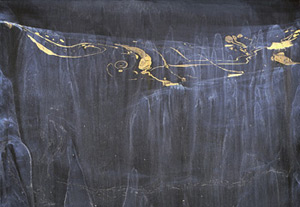 |
| Maxwell Mist 32 × 40 inches, 1991 Acrylic on museum board |
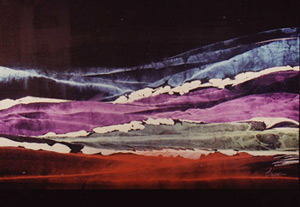 |
| Probability of Certainty 20 × 32 inches, 1996 Acrylic on museum board |
To artist and engineer Amy Lee Segami, water is no ordinary substance—it is her canvas. Using her knowledge of fluid mechanics, Segami paints on water in a contemporary version of the ancient Asian art form of Suminagashi.
“Ever since I was a kid, I was very much drawn to the creativity and expression in drawing and painting,” Segami says. But her father insisted that she train in a technical field, so she got a bachelor’s degree in mechanical engineering and a master’s degree in mechanical aerospace engineering from the Illinois Institute of Technology.
After graduating, Segami worked for five years in engineering development for pharmaceutical companies. But in 1989, she started to re-evaluate her life and felt there was something missing. To balance her life and return to her Chinese heritage, Segami started taking art and culture classes. One of her classes was a Chinese brush painting class, which is where she learned of Suminagashi.
Suminagashi originated in Asia more than 2000 years ago and was practiced by Japanese Shinto priests in the 12th century. Suminagashi artists would drip black ink in water and let it flow freely before transferring the image onto paper. Segami was immediately drawn to Suminagashi because of its resemblance to experiments in fluid mechanics, in which she could add smoke to air or dye to water to show how the air and water were moving. She says Suminagashi is a natural fit because it combines the two things she loves—science and art.
Her contemporary version of the ancient art form uses many bright colors and creates a more deliberate artistic expression by incorporating properties of fluid mechanics. Segami drips acrylic paint on the surface of water and then uses a variety of tools, such as traditional Chinese brushes, feathers, acupuncture needles, and sticks, to create turbulent and laminar flow patterns that give her art a three-dimensional quality. Adding color to the patterns shows how the water is moving and “makes the invisible visible,” Segami says. Once she is happy with the painting, she carefully lays a piece of rice paper on top of the water to capture the image. “The color is moving, and the water is moving, so you have to catch it really fast,” she says.
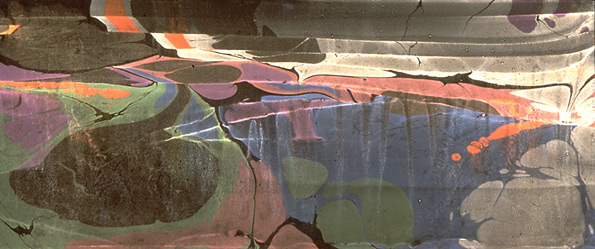 |
| Passion 16 × 40 inches, 1991 Acrylic on museum board |
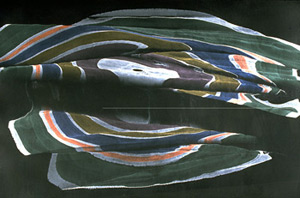 |
| Ring Leader 32 × 40 inches, 1992 Acrylic on museum board |
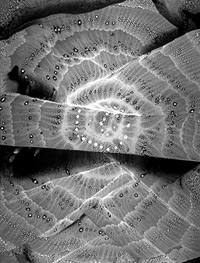 |
| Tesla Coil 32 × 40 inches, 1994 Acrylic on museum board |
Segami usually does not know in advance exactly what she wants to paint—only that she wants to express a certain dynamic of flow. The idea comes into the painting as she is creating it. She says her paintings are not rigid representations of reality, but are suggestions. The intricate flow patterns Segami sees in nature are inspiration for her artwork. “The beautiful swirls, the movement—the flows have such a complex design,” she says. “I want to share the insight, the feeling, and the pleasure that science can be beautiful.”
Segami says her paintings are a balance of probability and certainty. While she is certain about the properties of fluid mechanics and how the water will react, she is never really sure how well the colors will illustrate the flow patterns.
Although she spends most of her time working on her paintings, Segami is still involved in engineering and is currently working with BASIC International Inc., helping to market a technology that produces energy from waste.
Art and science are similar in many aspects, Segami says. They both involve creativity, innovation, and discovery. She hopes her paintings will help people realize that art and science fit together. “People often think of art and science as two completely different things, but they truly balance each other,” Segami says. “While art and science can each do their own task, together they can do amazing things, especially when it comes to creativity and innovation.”
Segami’s artwork will be on display at the Fermi National Accelerator Laboratory art gallery through November 1. The art gallery is open to the public before and after events in the “Arts, Lectures, and Film” series.
Text by Amelia Williamson
Paintings by Amy Lee Segami
Click here to download the pdf version of this article.






